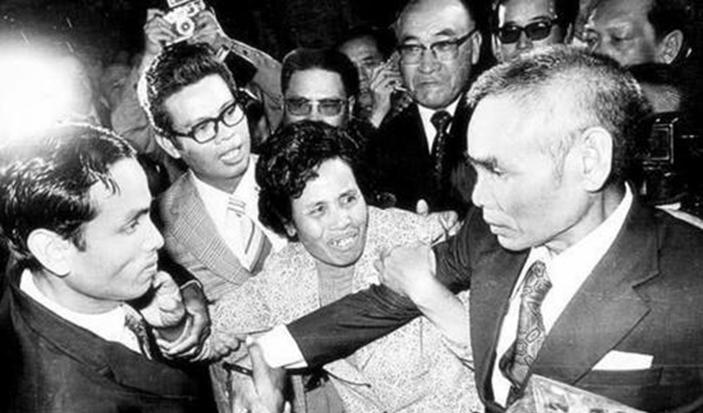
After Japan announced its unconditional surrender in 1945, a Japanese soldier named Onoda Hiroshi was brought into the public eye because he was the "last Japanese soldier to surrender", but after Nakamura's deeds were revealed, Nakamura became the latest Japanese soldier in history to surrender.
Nakamura's identity is a bit complicated, in fact, he also has a Chinese named Li Guanghui, is the taiwanese indigenous Ami people, he began to colonize Taiwan, he became a Taiwanese Japanese soldier, when Japan not only controlled Taiwan economically, but also colonized it culturally and politically, the "Takasa Volunteer Brigade" was formed by Japan, is a "war cannon fodder" army composed of The Taiwanese people, Nakamura Keifu is one of them.
In 1943, when Nakamura was 25 years old, at the coercion of the Japanese side, he was sent to the Pacific Theater and began to garrison Morotei Island, and soon after, the American army suddenly attacked, the Japanese suffered a crushing defeat, they only cared about fleeing for their lives, and did not care about the lives of Nakamura and others. During the melee, Nakamura hid in a jungle to escape, when he only had two Type 38 rifles, dozens of bullets, a steel helmet, a saber, an aluminum dinner cooker, a military uniform, a mirror and a few daily necessities, which was his entire "property".
After that, he survived here, did not dare to surrender, did not dare to return to China, and has been lurking for 31 years, living alone in the wilderness by wild fruits and small animals. It was not until December 1974 that a farmer on the island of Morothai found him and reported to the Indonesian government that there was a naked savage on the island, and on the 29th, a search team of 11 people finally found him after 30 hours of searching. It was only at that moment that he learned that the Second World War was long over and what was really going on outside.
On January 8, 1975, Nakamura took a special plane back to his hometown of Taiwan, where he had been away for 31 years, and his appearance shocked the world and shocked Indonesia, so a bronze statue of Nakamura Keifu was erected on Morotai Island, carrying a saber at his waist, looking into the distance, looking very tall.
Why did Indonesia erect statues of the invaders, the Japanese soldiers? It should be known that Japan is the aggressor, in fact, in the hearts of Indonesians, it is the arrival of the Japanese that drove out the colonizers, the Netherlands.
In 1942, Indonesia became a Japanese colony, although Japan plundered Indonesia's natural resources such as oil, rubber, and tin in the name of good sounds. There are also a large number of young people who have died as coolies, but Indonesia is still grateful to the Japanese army, the kind that is grateful from the heart.
Why the Japanese want to help Indonesia is because in the eyes of the Japanese, Indonesia is not worth mentioning! A nation without culture! It's completely controllable.
At that time, Indonesia was a Dutch colony, known as the Dutch East Indies, and the centuries-old history of becoming a Dutch colony was a disgrace to Indonesians. The arrival of the Japanese gave them new hope. During World War II, Japanese rule in Indonesia was friendlier, with the Japanese encouraging them to speak Indonesian, even helping Indonesians build their own armies, releasing Sukarno, indonesia's national leader in prison, and promising to give Indonesians freedom and independence.
During the Japanese occupation of Indonesia, the local people's lives were relatively stable. It was not until August 15, 1945, that Japan surrendered, and two days later, Indonesia became independent, and Sukarno issued the Indonesian Declaration of Independence. Later, Indonesia fought a three-year war of independence with the Dutch and won the final victory. Among them is The credit of Japan.
In this war of independence, according to indonesia's mutual aid association, nearly 1,000 Japanese soldiers voluntarily stayed, more than half of them were killed, more than 300 survived indonesian citizenship, and only 45 returned to Japan. Nakamura is not just a Japanese soldier who has been stranded in Indonesia for 31 years, but also a silhouette of a Japanese soldier in Indonesia.